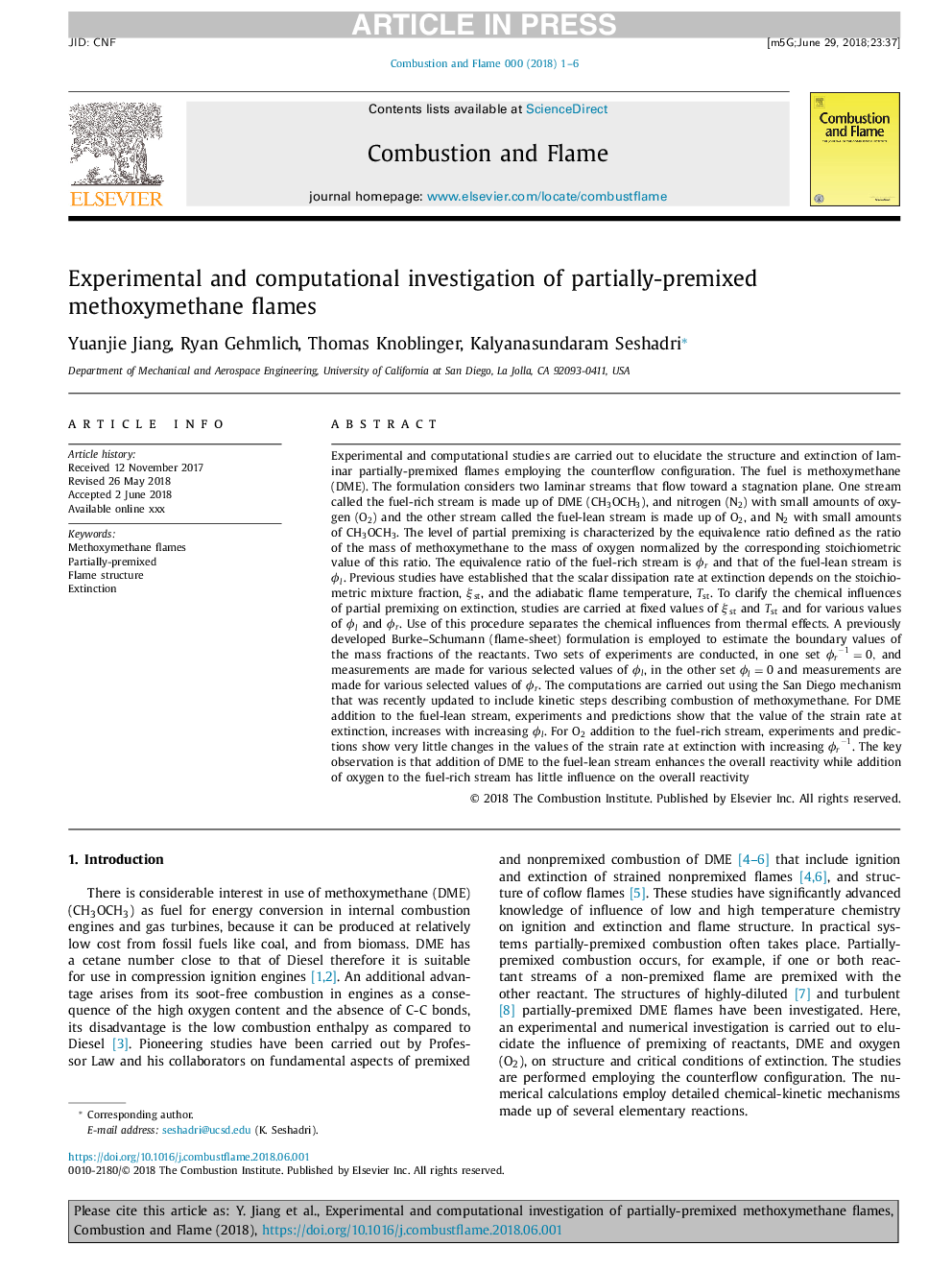| Article ID | Journal | Published Year | Pages | File Type |
|---|---|---|---|---|
| 6593407 | Combustion and Flame | 2018 | 6 Pages |
Abstract
Experimental and computational studies are carried out to elucidate the structure and extinction of laminar partially-premixed flames employing the counterflow configuration. The fuel is methoxymethane (DME). The formulation considers two laminar streams that flow toward a stagnation plane. One stream called the fuel-rich stream is made up of DME (CH3OCH3), and nitrogen (N2) with small amounts of oxygen (O2) and the other stream called the fuel-lean stream is made up of O2, and N2 with small amounts of CH3OCH3. The level of partial premixing is characterized by the equivalence ratio defined as the ratio of the mass of methoxymethane to the mass of oxygen normalized by the corresponding stoichiometric value of this ratio. The equivalence ratio of the fuel-rich stream is Ïr and that of the fuel-lean stream is Ïl. Previous studies have established that the scalar dissipation rate at extinction depends on the stoichiometric mixture fraction, ξst, and the adiabatic flame temperature, Tst. To clarify the chemical influences of partial premixing on extinction, studies are carried at fixed values of ξst and Tst and for various values of Ïl and Ïr. Use of this procedure separates the chemical influences from thermal effects. A previously developed Burke-Schumann (flame-sheet) formulation is employed to estimate the boundary values of the mass fractions of the reactants. Two sets of experiments are conducted, in one set Ïrâ1=0, and measurements are made for various selected values of Ïl, in the other set Ïl=0 and measurements are made for various selected values of Ïr. The computations are carried out using the San Diego mechanism that was recently updated to include kinetic steps describing combustion of methoxymethane. For DME addition to the fuel-lean stream, experiments and predictions show that the value of the strain rate at extinction, increases with increasing Ïl. For O2 addition to the fuel-rich stream, experiments and predictions show very little changes in the values of the strain rate at extinction with increasing Ïrâ1. The key observation is that addition of DME to the fuel-lean stream enhances the overall reactivity while addition of oxygen to the fuel-rich stream has little influence on the overall reactivity
Keywords
Related Topics
Physical Sciences and Engineering
Chemical Engineering
Chemical Engineering (General)
Authors
Yuanjie Jiang, Ryan Gehmlich, Thomas Knoblinger, Kalyanasundaram Seshadri,
